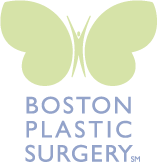Natrelle 410 Silicone-Gel Implants Get FDA Approval
Posted on February 28, 2013 | by Boston Plastic SurgeryOn February 20, 2013, the U.S. Food and Drug Administration (FDA) gave their approval for a fourth silicone-gel filled breast implant option to be used in breast augmentation and breast reconstruction procedures.
The Newly Approved Shaped Silicone Filled Breast Implant
The Natrelle 410 Highly Cohesive Anatomically Shaped Silicone-Gel Filled Implants are made by Allergan, Inc. and are approved for breast augmentation procedures for women at least 22 years old and for breast reconstruction and revision surgeries in women of any age.
The Natrelle 410 is only the fourth silicone gel filled breast implant that is approved for use in the United States, since the reintroduction of silicone implants in the market in 2006. Allergan, Inc. is also one of only three U.S. breast implant manufacturers.
Compared to the previously approved models of the Natrelle, the 410 breast implants contain more cross-linking within the silicone gel. This creates a silicone gel which will remain soft to the touch while retaining the implant shape over time.
While many women choose silicone gel implants because of the more natural look and feel over saline implants, the Natrelle 410 is a shaped implant which is designed to mimic the natural slope of a breast.
The FDA’s Approval Process For The Natrelle 410
The Natrelle 410 implants were approved based on a collection of seven years worth of data from nearly 940 women who underwent breast augmentation, breast reconstruction, and revision surgeries.
In addition to the data above, Allergan will be following about 3,500 women who will receive the newly approved implants. They will also be conducting a 10 year study involving 2,000 women who receive the Natrelle 410 implants to assess the long term outcomes and effects of the implants.
If you’re interested in exploring or learning more about your breast augmentation or breast reconstruction options, contact Dr. Fouad Samaha online, or at his Quincy, MA location.
Additional Source: ASAPS
